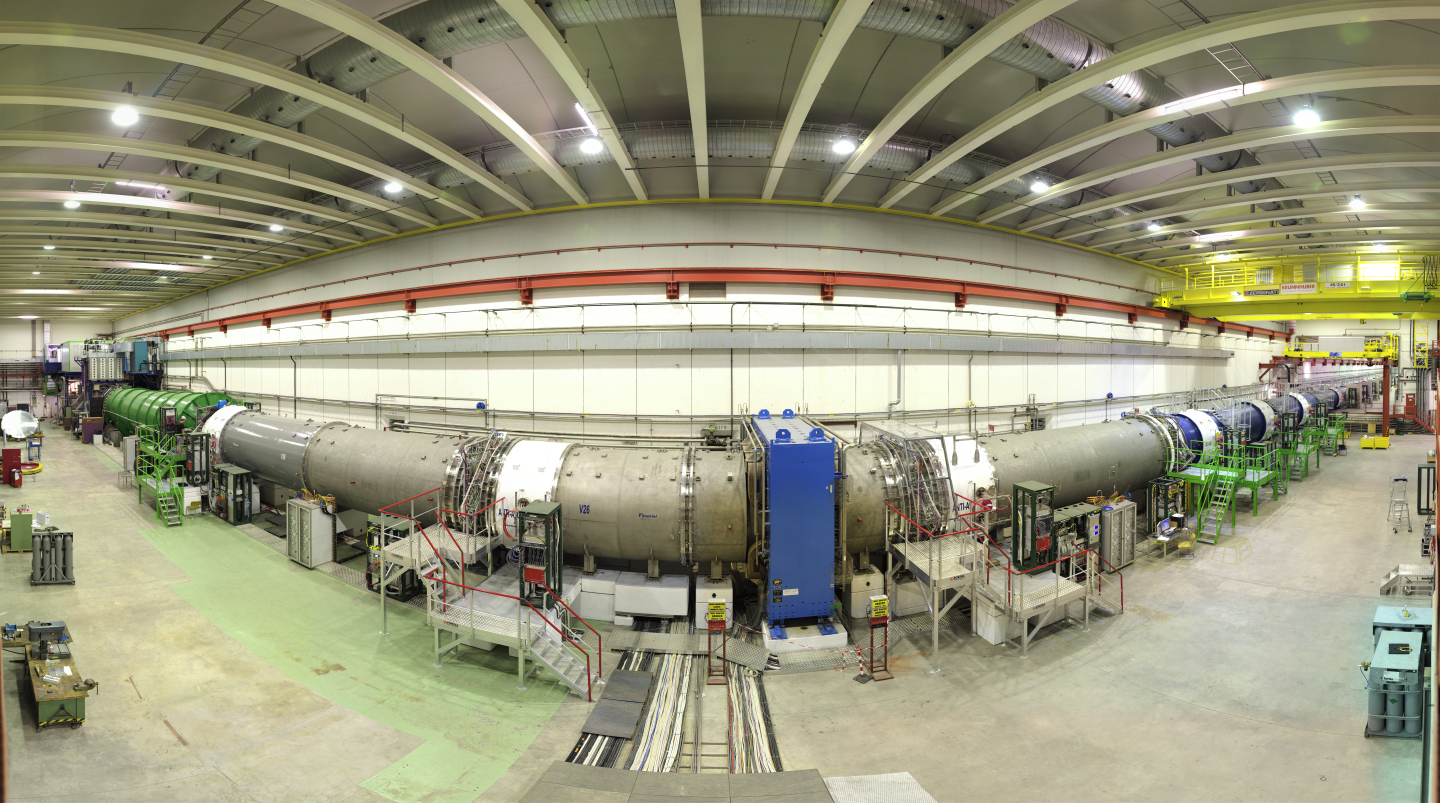
The NA62 experiment is roughly 270 metres long and is housed in the TCC8 and ECN3 caverns in CERN's North Area. (Image: M.Brice/CERN)
Probing rare particle physics processes is like looking for a needle in a haystack, but to find the needle we first need the haystack - a large amount of statistical data collected at high-luminosity experiments. The NA62 experiment, also known as CERN's kaon factory, produces this haystack of collision data to allow physicists to study rare particle physics processes and look for weakly interacting new physics particles. The collaboration recently presented the results of its first search for long-lived new physics particles at the 42nd International Conference on High Energy Physics in Prague.
"While experiments at the Large Hadron Collider are known to push the energy frontier with proton-proton collisions at the world-record energy of 13.6 trillion electronvolts, fixed-target experiments like NA62 are pushing the intensity frontier with a billion billion (1018) protons on target per year," said Jan Jerhot, a postdoctoral researcher at the Max Planck Institute for Physics, who led the analysis of the latest NA62 results.
These collisions at NA62, a fixed-target experiment, result in up to 1012 positively charged kaon K+decays per year - a much higher luminosity than that which can be reached in collider experiments. Fixed-target approaches and collider experiments complement each other in their quest to find new physics beyond the Standard Model. The excellent energy, momentum and time resolutions of the NA62 detector make it possible to search for the rarest processes in these large datasets.
The NA62 experiment operates in two modes - standard kaon mode, in which mostly rare kaon processes such as a kaon transforming into a positively charged pion and a neutrino-antineutrino pair (denoted by K+→π+ννbar) are studied, and a beam-dump mode, in which the proton beam from the Super Proton Synchrotron is dumped in an absorber, allowing searches for new, heavy particles with double the proton intensity compared to the kaon mode. At ICHEP, NA62 shared the preliminary results of its search for a long-lived new physics particle using the data obtained with 1.4 x 1017protons on target from the beam-dump operation in 2021.
The collaboration specifically looked for the decays of a beyond-the-Standard-Model particle into two charged hadrons, such as pions and kaons, and for the decay of neutral hadrons into photons. These are possible decays of new physics particles in beyond-the-Standard-Model theories and promising candidates to explain elusive dark matter such as axion-like particles, dark photons and dark Higgs bosons.
Felix Kahlhoefer, a professor of theoretical physics at the Karlsruhe Institute of Technology, Germany, explains that, since the recent NA62 results are model-independent, the physics community worldwide can reinterpret these results to constrain many different models beyond the Standard Model. "We simultaneously obtain information for a whole class of decay channels, so it becomes possible to distinguish different models of long-lived particles beyond the Standard Model," he said.
The distance between the NA62 target and the calorimeters is more than 240 metres, making the experiment very suitable for searching for long-lived new physics particles that fly a macroscopic distance before decaying. These are especially difficult for other particle detectors at the LHC such as ATLAS (46 metres long) and CMS (21 metres long) to detect as they may not be able to see the decays of such exotic particles before they leave the detector.
Exploring these uncharted territories can address some of the problems that cannot be explained by the robust Standard Model. While no evidence of a new physics signal was found in this latest analysis, NA62 has been able to exclude new regions of masses and interaction strengths in beyond-the-Standard-Model theories. Physicists at NA62 plan to study seven times more data in the beam-dump operation mode compared to the current analysis mode until the end of the next NA62 physics run and hope to unravel the rarest of rare events seen in particle physics.






